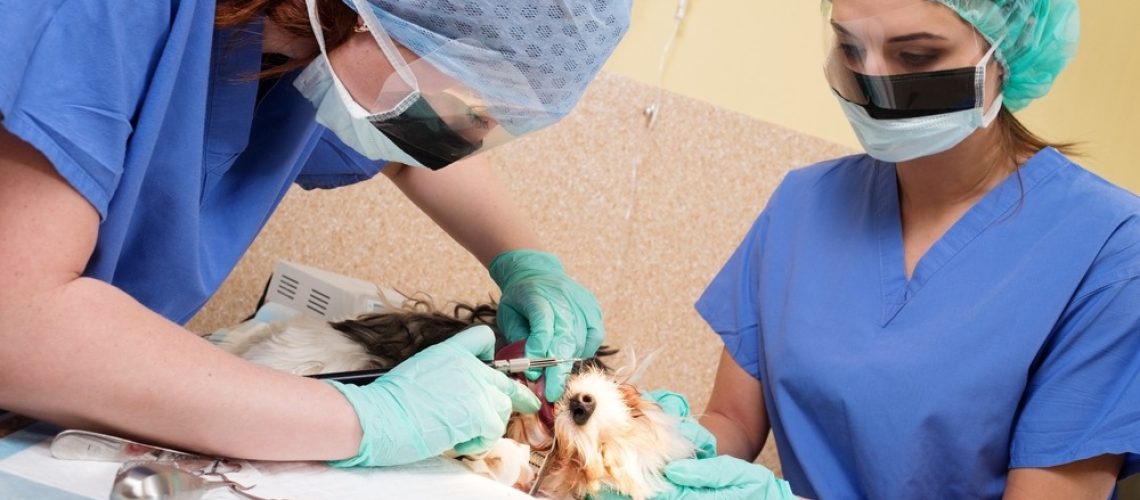It might surprise the majority of dog owners; however, the fact is that periodontal disease among pets is the common issue. Now the question that arises here is what this disease is and how it can be prevented? This disease, no doubt, is a type of bacterial infection that can result in severe decay. It’s vital to treat the issue as soon as possible. Otherwise, it can cause severe health issues in dogs. The major issue with this disease is that it can make your dog’s teeth weak, and if left untreated for a long time, it can lead to the bone as well as tooth loss.
In addition to tooth decay as well as gingivitis, this disease also results in sepsis, heart diseases, liver infection, and so on. What’s more imperative is to choose an experienced pet dental specialist who knows how to address the issue properly.
Dental Disease is Quite Painful
Just like human beings, dental disease among pets can affect your pet’s life quality. Along with some physical symptoms such as inflammation and bad breath; people will also observe some behavioral changes like difficulty in eating, hiding, lethargy, aggression among pets.
Stages of periodontal diseases in dogs
Stage 1: During the initial stage of this disease, bad odor is sometimes the only sign one observes. Even, a dog owner can also observe redness, mild inflammation in the gum line, and the stage is known as gingivitis.
Stage 2: In this stage, the vet can observe small pockets between your dog gums and teeth, known as periodontal pockets. After that, your vet will measure these pockets, and on the off chance, if the pockets are simply more, i.e. 3mm’s deep, then the treatment should begin immediately.
Stage 3: In this stage, the vet will see if the periodontal pockets appear more and are 5mm’s deep as this leads to bone loss. So it’s vital to address the issue as soon as possible as your dog needs the attention of the vet.
Stage 4: In this stage, you will see 40-50 percent of bone loss. The buildup of tartar will be evident in this stage.
Prevention begins at home
Below given are some prevention tips that one should follow to take care of their dog’s oral health:
- Brush the teeth of your pet daily by making use of a pet specific toothpaste as well as brush.
- Feed your dog with a good quality diet as many prescription diets are specifically for dogs suffering from dental issues.
- One can also give dental chews to their dogs as they can also help your dog.
- Be sure to check the teeth as well as the gums of your dog once a week to observe the signs of bleeding, worn teeth, inflammation, discoloration, etc.
What are The Causes of Periodontal Disease?
The disease is related to bacteria; mixing of saliva, food, as well as bacteria from plaque. This plaque, when remains in the teeth for a long time, converts into tartar. When your dog’s body faces difficulty in fighting off the bacteria that are contained in plaque; it becomes hard. This with time; pushes the gum slightly away from teeth, thus creating small pockets between teeth as well as gums. These pockets create a breeding area for the bacteria which can destroy bone as well as tissue. In short, this stage is quite hurting for your dog.
Why Calling the Veterinary Dentist is Quite Important?
As a dog owner, it’s your responsibility to take care of your dog’s dental health, and it’s important to for your pet to be visited by the vet regularly. The veterinarian possesses the training, and they are experienced enough to spot dental issues early before they become worse. This can spare your dog from horrible symptoms and can also save you enough money that may cost you more in the long run on dental treatments.
Final Insights
Hope this blog has helped you in knowing more about the periodontal disease and how one can prevent this disease from happening. By giving proper attention to your dog, you can save your dog’s life and this way they will be able to enjoy a quality life. It is always a better option to call for the vet at home to examine your pet, rather than taking him to the vet clinic in the bad health.




